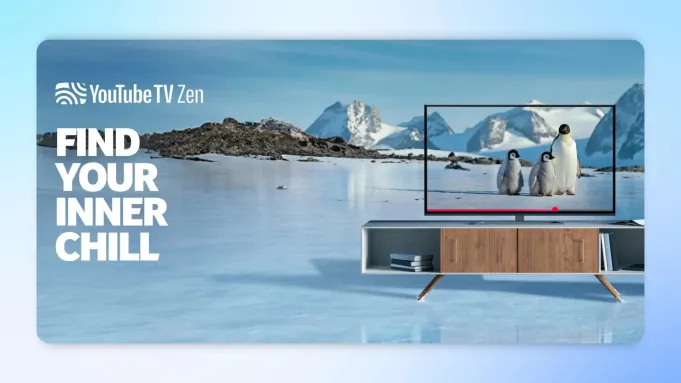YouTube TV has emerged as one of the leading pay-TV providers in the United States in a mere eight years, amid a climate of decline and cord-cutting.
It has challenged the long-standing living-room paradigm by rapidly expanding to over 8 million U.S. households (only Comcast, Charter, and DirecTV are larger) since its inception in 2017. Its new-model interface, which replaces traditional channel-flipping with curation and algorithms, as well as features such as an unlimited DVR and multi-view, has been well-received by viewers.
Nevertheless, there are certain industry circles that have received less favorable attention regarding a disruption that involves advertising. The function of distributors will not be at the forefront of the conversation when TV ad buyers and sellers convene in New York next week for a glittery annual spree of upfront presentations from Monday to Wednesday. However, the dissatisfaction with YouTube TV’s methodology has escalated into what audio engineers refer to as “ground loop hum” emanating from a speaker. In recent days, Deadline engaged in discussions with approximately a dozen stakeholders in the TV bundle, including programmers, vendors, and media buyers. The majority of these stakeholders expressed their dissatisfaction with YouTube TV, citing a lack of collaboration and a propensity to squander ad inventory.

The prevalent criticism is that YouTube is not comparable to cable companies, which employ vehicles to enter residential neighborhoods and string wires from telephone poles. It is a technology colossus that is data-hungry and operates its pay-TV business not for profit, but rather for long-term strategic leverage. As a result, the conventional exchange between distributors and programmers is not applicable. In practical terms, this implies that any unsold inventory from the approximately 2 minutes per hour allotment to YouTube is not made available to programmers for repurchase so that it can be used for national commercials. Throughout the pay-TV era, those reacquisitions of time have been negotiated. While programmers and distributors frequently engage in conflict, typically over carriage fees, they do share the goal of selling the maximum amount of advertising time.
Unsold inventory is an inevitable reality for all pay-TV operators in a world where hundreds of channels are broadcast 24 hours a day. It is evident that advertisers have a high demand for prime-time sports and Yellowstone, which are not the only types of programming. Interstitial cards or house ads for their own services have been the traditional approach of cable and satellite companies to occupy unsold time. However, YouTube TV has had other objectives from the outset. Susan Wojcicki, the late CEO of YouTube, characterized it as “an endeavor to evolve television” during a launch event in 2017. In place of serving “barker” ads or local commercials for Bob’s Chevy to overwhelmed viewers, they present pastoral nature scenes of snowy mountain glades or acorn-nibbling squirrels in a misty glen, accompanied by calming spa-like music. The on-screen graphic encourages users to “enjoy the zen” for a few seconds or occasionally for several minutes. “We will return immediately.”
In an interview with Deadline, Chris Pizzurro, the founder and CEO of Leap Media, stated, “The tech companies are experiencing difficulty in selling all of the advertising availability they have, and they have no understanding of how to fill programming time with time buys, as we do in traditional TV.” “There are no Ginsu Knives on YouTube TV, and there are no informercials.”
READ MORE: YouTube TV Is Now Reportedly The Fourth Largest Television Provider In The United States
According to a senior sales executive, YouTube TV is intentionally disrupting industry convention and “leaning into the general dissatisfaction with the MVPD ecosystem” as a competitor to cable and satellite.
Deadline reached out to YouTube regarding this topic, but they declined to provide a response. Given the delicate nature of discussing a long-term business relationship with a significant partner, media executives consented to speak only if anonymity was granted.
“You are aware of their operations,” stated a senior sales executive from a significant media organization. “They employ a machine-like approach to exploit your weaknesses.” It is a commercial opportunity that is not being monetized whenever you observe that Zen phenomenon.

According to a source familiar with the matter, NBCUniversal made proactive adjustments in response to the manner in which its daytime programming on CNBC was being presented on YouTube TV. Despite its diminutive size, the business network’s audience is disproportionately wealthy and influential. The network capitalized on the potential of that viewership by aggregating potential “zen” ads and utilizing them to promote various aspects of the media empire, including Bravo, NBC’s sports, news, and entertainment offerings.
“Enjoy the Zen” has gained popularity among viewers at a time when meditation apps and ASMR YouTubers are at an all-time high. YouTube TV has recently implemented a full-time residence in which the nature-themed interludes are continuously broadcast.
In a social media post, YouTube TV stated, “You requested, and we responded.” “Our new Zen channel now offers a 24-hour Zen experience.”
The posture is significantly influenced by the age profile of YouTube TV subscribers. Although younger generations are more receptive to advertisements on social media and other online platforms, they are also not seeking the same television experience as their parents, with over 25% of each hour being dedicated to commercial breaks. Viacom was accused of “ad stuffing” as cable began its decline in the 2010s. The traditional linear industry appeared to be deliberately alienating viewers as a result of the neglect of customer service and the extreme behavior that occurred just as Netflix was beginning to gain momentum.
READ MORE: YouTube TV Fixes Its Broken TV Everywhere Login Issue, Allowing Customers To Access More Content
Nielsen conducted a survey of viewership in households that had wired cable and homes that had YouTube TV in March 2024. It was discovered that cable accounted for 4% of the 25-to-34-year-old demographic, while YouTube TV accounted for 13%. The discrepancy was even more pronounced among individuals aged 35 to 49, with a range of 11% to 22%. The pendulum swung the other way as the pendulum advanced up the age demo ladder, with cable leading by 28% to 26% among 50-to-64-year-olds and 49% to 22% among those 65 and older.
Bruce Leichtman, a seasoned media researcher who monitors pay-TV providers, has observed that YouTube’s recent expansion is beginning to plateau. Consequently, the manner in which it approaches advertising will not inevitably shape the entire industry. Other internet-delivered operators, such as Hulu + Live TV, Fubo, and Sling TV, have experienced either stagnant or declining subscriber counts in recent quarters.
Leichtman observed that YouTube’s rate of growth has fallen to half of what it was a few years ago, and he also noted a “pull-forward” in 2023 when it began streaming the NFL’s Sunday Ticket package. The company has also increased prices to nearly $83 per month, a 28% increase over a two-year period, which could potentially impede the momentum. “They initially employed a growth strategy that involved granting the market power through reduced pricing, but this approach is not sustainable,” Leichtman asserts.
The discussion regarding YouTube TV’s advertising policy is all the more intriguing in light of the fact that their parent company, Google, was recently convicted by a federal judge of antitrust violations in its advertising technology operations.
“One senior media executive informed Deadline that Google has a tendency to avoid sharing signal, which results in the digital marketplaces being exceedingly challenging for their partners to monetize.” “However, it is possible that the pay-TV sector will adopt a more user-friendly approach in the future.”
Evan Shapiro, a former executive at a television network who is currently a consultant and self-described “media cartographer,” believes that YouTube TV’s greatest competitor is itself. YouTube TV is unable to access the broader creator-defined arena of general YouTube due to its contractual obligations with networks, which would prevent it from attracting viewers away from the pay bundle. YouTube’s ad revenue in 2024 was approximately $56 billion, which was significantly higher than that of its traditional media competitors. The company does not disclose results from YouTube TV; however, if subscriber levels reach a plateau and advertising follows suit, it will be significantly more difficult to expand through subscription pricing increases than it is to do so on the free, ad-supported side of the fence in YouTube.
Shapiro informed Deadline that the issue is not that YouTube is “foregoing revenue,” as this is an action that YouTube would never take. “They are more adept at generating it and demonstrating its value than traditional television.”
Step into the ultimate entertainment experience with Radiant TV! Movies, TV series, exclusive interviews, live events, music, and more—stream anytime, anywhere. Download now on various devices including iPhone, Android, smart TVs, Apple TV, Fire Stick, and more!


